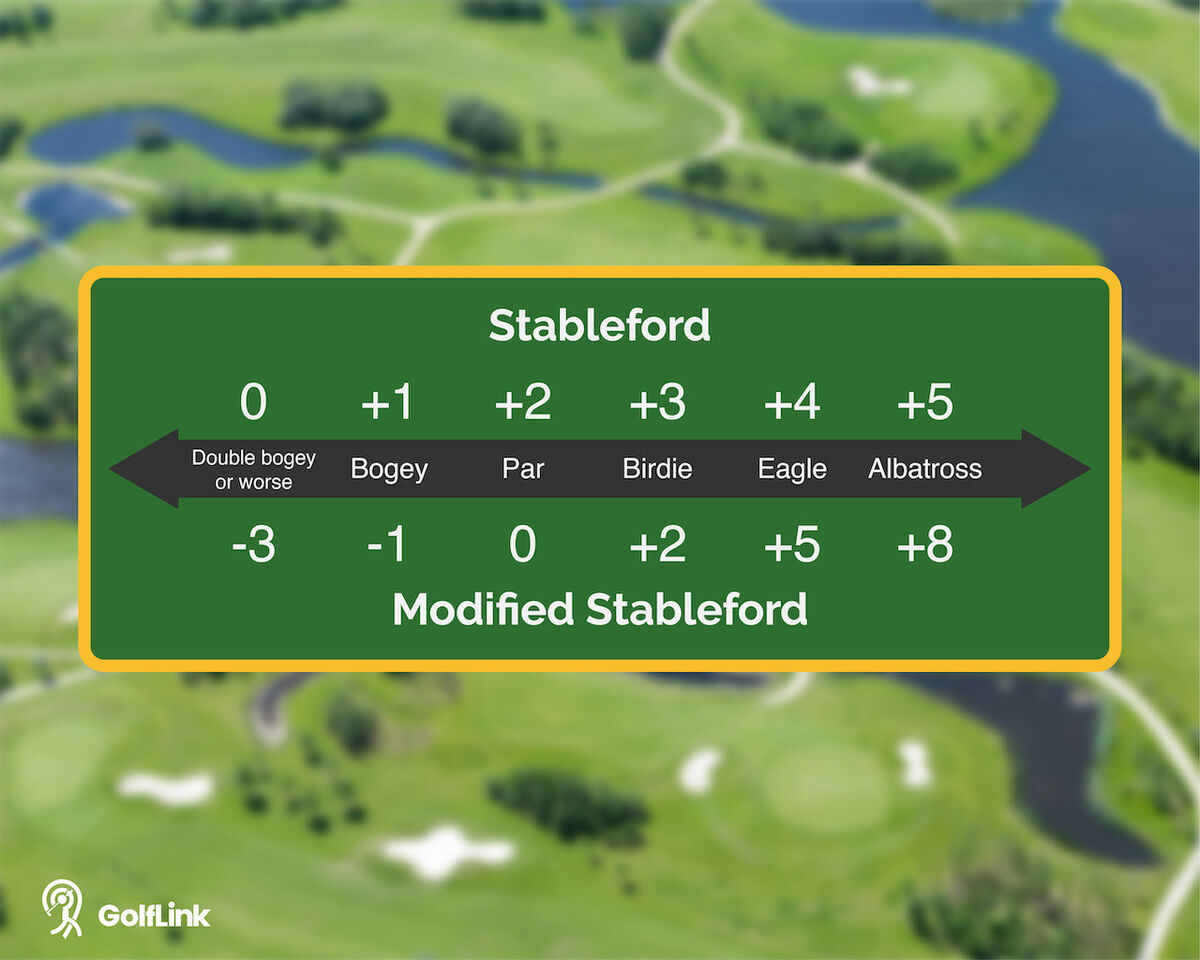Scoring Stableford and Modified Stableford: Go Big or Go Home
Golfers love stableford scoring because it rewards good play more than it punishes bad holes

Stableford or modified stableford scoring in golf is far from the most popular form of scoring in the United States, but elsewhere around the world, including the UK, it’s the go-to scoring for casual competitions.
Once you understand how to score stableford, it’s easy to see the appeal.
What is Stableford Scoring?
Instead of strictly tracking strokes, stableford scoring assigns a point value to each score. The better you play, the more points you earn.
Point values are based on a fixed target score, which by default is par or net par (par plus any handicap strokes a player gets on that hole).
Scores are earned on a hole-by-hole basis and the higher the total at the end of the day, the better.
Traditional stableford scoring uses a point-by-stroke approach, where each stroke represents one point until a player can no longer earn a point.
The modified stableford scoring system takes that risk-reward element to the next level, disproportionately rewarding extra points for lower scores and applying smaller penalties for higher scores to encourage aggressive play.
Stableford Scoring

Here are the point values to assign to each score when scoring stableford. Keep in mind that these scores can be in relation to gross or net par:
- Albatross (3 under par): 5 points
- Eagle: 4 points
- Birdie: 3 points
- Par: 2 points
- Bogey: 1 point
- Other: 0 points
Modified Stableford Scoring
Modified stableford has become more popular because it magnifies the risk-reward element that people love about the stableford format. One big difference between stableford and modified stableford is that in modified stableford you can actually lost points.
Here’s an example of the points players get for each hole using modified stableford scoring:
- Albatross: 8 points
- Eagle: 5 points
- Birdie: 2 points
- Par: 0 points
- Bogey: -1 points
- Other: -2 points
Stableford Strategy
In traditional stableford scoring, once a player is more than one stroke over the fixed score, they can no longer earn a point on the hole, and can pick up their ball if they choose. With the modified stableford system rewarding lower scores, aggressive play is highly incentivized.
How Stableford Differs From Stroke Play
Paul and Mary are using the modified stableford scoring values outlined above with par as their fixed target score.
Paul makes three consecutive pars to open the round while Mary makes one par, one birdie, and one bogey.
Each player is at even-par in stroke play scoring, but in the modified stableford match, Mary leads Paul 1-0 because she earned two points for her birdie and lost only one for her bogey, while Paul collected no points for each of his three pars.
This illustrates how the Modified Stableford system rewards aggressive play.
Why Use Stableford Scoring?
Using stableford or modified stableford scoring every once in a while can train golfers to seek out lower scores and not fear the higher ones.
Conservative play can take over when golfers are focused on avoiding big numbers, but with the damage limited under stableford scoring, and success rewarded even more under modified stableford scoring, players can learn to play with a new, aggressive mindset.